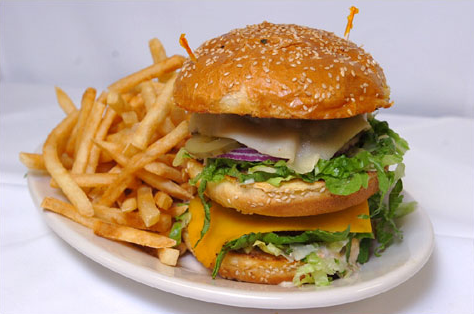Fats – Good and Bad

FOODS RICH IN monounsaturated fats include avocados, nuts (almonds, hazelnuts and pecans) and olive, safflower and canola oils.
Polyunsaturated fats are found in salmon, trout and herring, fish rich in omega-3 fatty acids. Walnuts and flaxseed, and soybean, corn and cottonseed oils, are also a good source of polyunsaturated fats.
Saturated fat is found in foods from animals, including beef, veal, lamb and pork, and dairy products made from whole milk.
Trans fat, considered the worst of fats, is created when liquid oils are converted into semisolid fats by adding hydrogen, a process called hydrogenation. This process can increase LDL cholesterol. Trans fats are found in commercially made doughnuts, many packaged cookies, cakes, muffins and crackers, as well as partially hydrogenated vegetable oils, fried foods, margarine and shortening.
“FAT MAKES YOU FAT.” “Fat is unhealthy.” We’ve heard it all. But it isn’t totally true. Fat is like the witches in The Wizard of Oz— there are good fats and bad fats.
Yes, you need fat
Everyone needs to consume good fats. Fat is part of every cell membrane in your body. So in order for them to heal or repair, you need fat as the raw material and you need fat to make a new cell when one dies. Fat is also needed to absorb certain nutrients and vitamins A, D, K and E. And good fats reduce inflammation known to trigger premature aging.
The 2010 dietary guidelines Human Services (www.health.gov/dietaryguidelines) recommend total fat intake of 20 to 35 percent of total calories for adults, including less than 10 percent saturated fat (nutritionists believe it should be much less), and trans fats should be close to zero.
Benefits and hazards
Good fats promote better health. Studies show that eating foods high in monounsaturated and polyunsaturated fats, the good fats, may slightly lower LDL [low-density lipoprotein] cholesterol levels.
Today we know that by decreasing LDL cholesterol you can decrease your risk of heart disease and may reduce blood sugar levels and reduce insulin resistance. This can benefit people with Type 2 diabetes and metabolic syndrome. Foods with healthy fats are very satisfying and make people feel fuller, so they eat fewer calories.
Bad fats increase your risk for certain diseases. Trans and saturated fats are artery clogging and raise blood cholesterol, particularly bad LDL cholesterol, causing heart attacks and strokes.
Read the labels
While many manufacturers have removed trans fats and cities such as New York have banned them, it’s important to read labels.
Starting in 2006, companies were required to list the trans fats on nutrition facts labels. However, if it’s less than 0.5 gram, it does not have to be listed on the nutrition facts label, but must appear in the ingredients.
For example, some brands of peanut butter have less than 0.5 gram of partially hydrogenated oils. It won’t be listed in the nutrition facts but will appear in the ingredients list.
Substitutes
Instead of butter, think about dipping bread in extra virgin olive oil with herbs, balsamic vinegar or hummus. On a sandwich, use Hass avocados instead of mayo, and also include nuts in your shopping cart.

